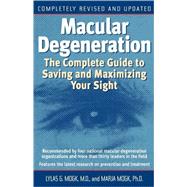
Note: Supplemental materials are not guaranteed with Rental or Used book purchases.
Purchase Benefits
What is included with this book?
| Acknowledgments | p. xix |
| Introduction: My Family's Story | p. 1 |
| Understanding AMD | |
| What Is AMD? A Portrait | p. 9 |
| Medical Treatments, Research, and New Discoveries | p. 42 |
| Genes, Greens, and Oils: The Causes, Prevention, and Natural Treatment of AMD | p. 88 |
| New Gourmet Greens: Recipes for Your Eyes | p. 132 |
| Experiencing AMD | |
| I Am Not Blind: The Shock of AMD | p. 155 |
| With the Heart One Sees Rightly: Living Fully with AMD | p. 182 |
| Sixteen Tips for Family and Friends | p. 225 |
| I See Purple Flowers Everywhere: The Many Visions of Charles Bonnet Syndrome | p. 236 |
| Addressing AMD | |
| Why Visual Rehabilitation Is Right for You | p. 255 |
| Making Things Brighter: Lighting | p. 264 |
| Your Reading Workshop | p. 276 |
| Making Things Bigger: Magnifiers, Telescopes, and Computers | p. 298 |
| Saving Sight on the Road: Driving, Alternatives, and Traveling | p. 337 |
| Saving Sight at Home and in Your Community | p. 362 |
| Appendixes and Index | |
| Macular Degeneration Organizations, Finding Visual Rehabilitation Programs in Your Area, On-line Communities, and Memoirs by People with Vision Loss | p. 403 |
| Reading, Watching, and Listening | p. 410 |
| The Best Low-Vision Product Catalogs, and CCTVs, Computers, and Software | p. 422 |
| Driving, Civil Rights, Tax Benefits, and Donations and Bequests | p. 429 |
| Research Updates and Nutrition Studies | p. 434 |
| Canada and Canadians with AMD | p. 436 |
| Index | p. 441 |
| About the Authors | p. 457 |
| Table of Contents provided by Rittenhouse. All Rights Reserved. |
The New copy of this book will include any supplemental materials advertised. Please check the title of the book to determine if it should include any access cards, study guides, lab manuals, CDs, etc.
The Used, Rental and eBook copies of this book are not guaranteed to include any supplemental materials. Typically, only the book itself is included. This is true even if the title states it includes any access cards, study guides, lab manuals, CDs, etc.
Excerpted from Macular Degeneration by Lylas G. Mogk, Marja Mogk
All rights reserved by the original copyright owners. Excerpts are provided for display purposes only and may not be reproduced, reprinted or distributed without the written permission of the publisher.